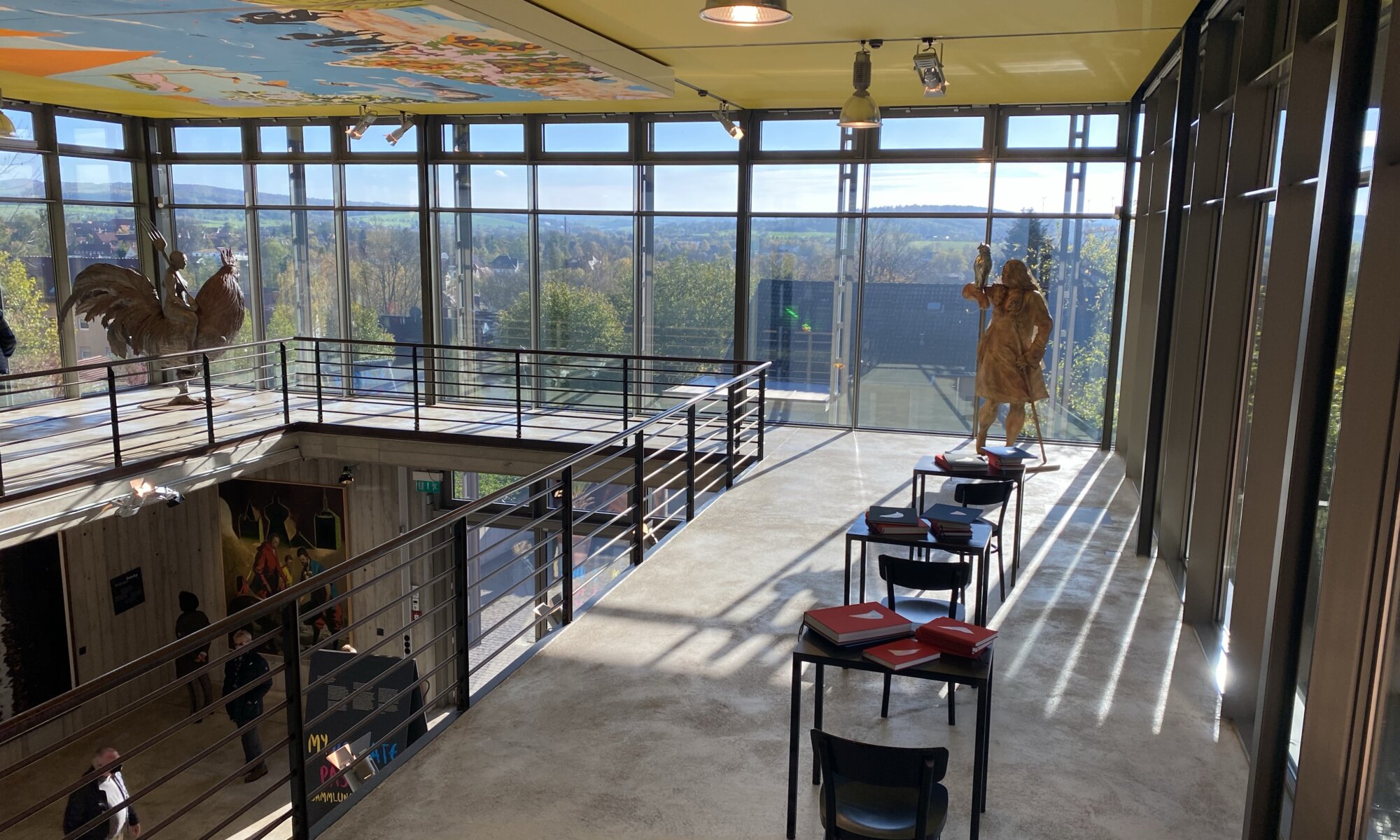Hans-Georg Näder is an entrepreneur from Duderstadt who took over the family business in third generation and made the company the world leader in prosthetics. He always remained connected to his home, the Eichsfeld, and he acts as patron for many local initiatives. He is also collecting art and next to his home he opened a small private art museum, the Kunsthalle HGN.
Continue reading “Private passion”City history
Like every city, Göttingen is collecting items relevant to the history of the region. That’s the task of the Städtisches Museum located in the Hardenberger Hof. It was created in 1883 and was first placed in the Grätzelhaus at the Goetheallee. In 1897 it moved to its current location, an ancient building from the year 1592. The building was continuously extended but the buildings have two central drawbacks: they are not visible from the pedestrian zone (even though it is not far away) and maintaining these old buildings costs a lot of money.
Continue reading “City history”Museum für Komische Kunst
Need something to laugh? The Caricatura – Museum für Komische Kunst at Frankfurt am Main is a museum for comical art and exhibiting mainly cartoons with the intention to make the viewers laughing out loud. This special museum exists since 2008 and it is well-located in this city which has a long satiric history. The ground floor is used for changing exhibitions and while I was there cartoons by Klaus Stuttmann where shown, leading continuously back through time and German history and politics.
Continue reading “Museum für Komische Kunst”Kansallismuseo
Time to learn more about Finnish history? The Finnish national museum (or Suomen kansallismuseo) of Helsinki is a great place to do so. It is not a boring history museum; it is immersive, playful, simply great. The exhibition shows all about Finnish history, from stone age to the 21st century and is presented in an amazing historical building from 1910.
Continue reading “Kansallismuseo”Kiasma
The Kiasma at Helsinki is a museum for contemporary art. The name refers to the optic chiasma, the point where optic nerves cross in the brain. The architecture is fantastic and the museum conception is a bit crazy and therefore the museum is absolutely fun to visit. It was built in the 1990s after a lot of controversies and after the plans of U.S. architect Steven Holl. He was the first foreigner to design a building in Helsinki after the time of German architect Carl Ludwig Engels.
Continue reading “Kiasma”designmuseo
You like Scandinavian design but have not yet introduced yourself to specific Finnish design? Then have a look at the designmuseo in the design quarter of Helsinki. It was founded already in 1873 and exhibits all kinds of design, including graphic design, industrial design an fashion. And it is absolute fun to spend some time there!
Continue reading “designmuseo”Subterranean
The Amos Rex Art Museum is a fantastic exhibition place for art at Helsinki. It has a special location: very close to the city center, but underground. If you want to visit it you need to go to the Lasipalatsi, a functionalist building close to the main railway station. It combines coffee bars, shops, restaurants and a cinema (the Bio Rex). And underneath the Lasipalatsi (glass palace) you can find museum – fortunately the entrance at the building is clearly visible.
Continue reading “Subterranean”Time-travel
The island Seurasaari in the north-west of Helsinki gives you the option to travel in time. An open-air museum exhibits 87 buildings from the Finnish countryside that have been built between the 17th and the 20th century and later transported to the island. This includes farm buildings, a church and even a mill. The staff is dressed-up in historic clothes and able to tell you more about the function of the buildings and rural life in the past.
Continue reading “Time-travel”HAM
The city of Helsinki has an own art collection which consists of 9,000 works. A lot of them are on display in public places, a concept I really like. The rest of them can be found at the Helsinki Art Museum (or short: HAM). Part of the presented works is a permanent exhibition of paintings by Tove Jansson whom we all mostly know as the creator of the Moomins. As she was born and died in Helsinki, the HAM takes care of her legacy.
Continue reading “HAM”Wallraf-Richartz-Museum
If you’re visiting Köln, Germany, and you’re into art – have a look at the Wallraf-Richartz-Museum in the city center. It is a beautiful and classy art museum that presents sacred and profane art and opens up new perspectives on ancient artworks. If religious art is nothing for you, you can enjoy wonderful impressionist and neoimpressionist works from the Fondation Corboud as well.
Continue reading “Wallraf-Richartz-Museum”









